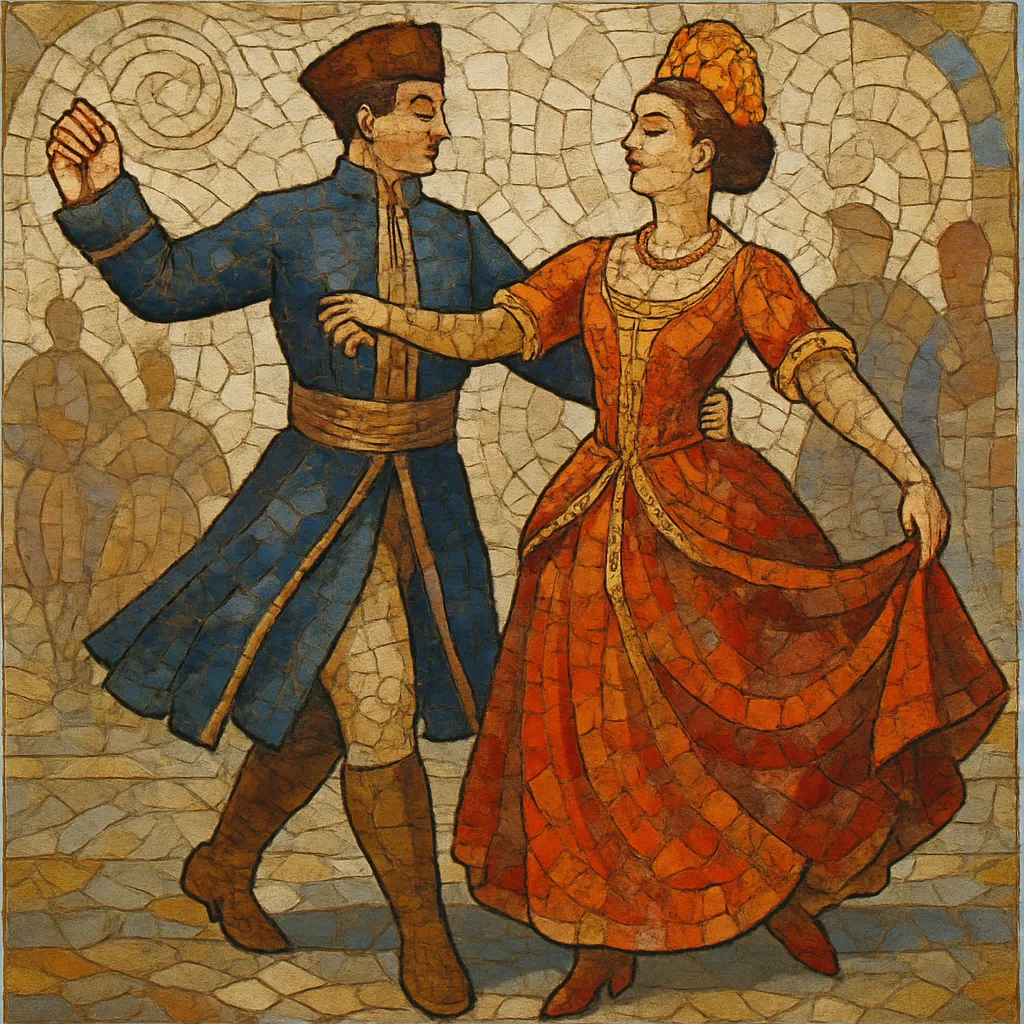The polonaise is a stately Polish processional dance and musical form in triple meter whose name (from the French “polonaise,” meaning “Polish”) reflects its courtly origins. It is characterized by a noble, walking gait; strong emphasis on the first beat; and a hallmark rhythmic cell often rendered as an upbeat followed by a dotted or two‑sixteenth pattern within 3/4 time.
Emerging from earlier Polish walking dances (chodzony), the polonaise became a prominent court and ballroom dance across Europe in the 18th century and, in the 19th century, a stylized pianistic and orchestral genre. In Poland, it carries strong cultural associations with national identity, ceremony, and patriotic expression, famously elevated by Chopin.
The roots of the polonaise lie in Polish processional folk dances (especially the chodzony) that circulated among the nobility by the late 16th and 17th centuries. As it entered aristocratic culture, the dance took on a dignified, ceremonial role, often leading court festivities. By the early 18th century, the French term “polonaise” became standard across Europe, helping the form spread into courtly and ballroom contexts.
During the Baroque and Classical periods, composers integrated the polonaise into suites, keyboard collections, and orchestral settings. Its triple meter and characteristic rhythmic figures made it a recognizable, cosmopolitan dance type. J.S. Bach included polonaises in keyboard works; later, Haydn- and Mozart‑era circles treated it as one among many fashionable dance forms at court and salon.
In the 19th century, the polonaise became a vehicle for national feeling and virtuosic display. Frédéric Chopin transformed it into a concert genre for piano—alternately brilliant and heroic (e.g., the “Heroic” Polonaise, Op. 53) or reflective and noble—solidifying its status as a symbol of Polish identity. Composers across Europe embedded polonaises in operas and orchestral works to evoke grandeur and ceremony, from ballroom scenes to ceremonial tableaux.
The polonaise remains embedded in Polish cultural life (e.g., opening formal balls and school proms) and continues to appear in concert repertoire and film music. Composers such as Wieniawski and Moniuszko contributed notable instrumental and stage polonaises, and modern creators occasionally reference its stately rhythm and ceremonial character in orchestral scores, film cues, and stylized piano works.


